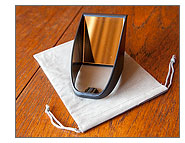 I discovered Professor Kobre’s Lightscoop during the Holidays while I was putting together our Cheap Gifts for Photographers guide. It was suggested as a possible fit and when I looked it up on the Web I was impressed enough to include it in the guide. Basically, the Lightscoop allows cameras with pop-up flashes and hot shoe mounts to bounce the flash off the ceiling for better indoor portraits. It’s a really easy and inexpensive solution for the generally poor quality of direct flash lighting.
I discovered Professor Kobre’s Lightscoop during the Holidays while I was putting together our Cheap Gifts for Photographers guide. It was suggested as a possible fit and when I looked it up on the Web I was impressed enough to include it in the guide. Basically, the Lightscoop allows cameras with pop-up flashes and hot shoe mounts to bounce the flash off the ceiling for better indoor portraits. It’s a really easy and inexpensive solution for the generally poor quality of direct flash lighting.
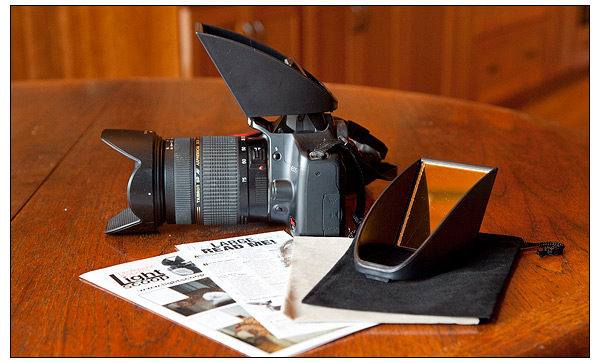
Bouncing flash light has been a standard photography technique for a long, long time – probably as long as photographers have been using artificial light. Many hot shoe flashes can be rotated upward so that the light can be bounced off the ceiling. But with the exception of a Panasonic Lumix DMC-L1 / Leica Digilux 3 DSLR, bouncing isn’t possible with the built-in pop-up flashes on entry-level and mid-range digital SLRs. It’s great that so many current digital SLRs have the built-in flash but direct flash isn’t very flattering for portraits. The light is flat and lifeless and you often get harsh shadows or just plain blackness in the background. Bouncing your flash off the ceiling softens the light and spreads it around, opening up the background a bit and leaving a bit of shadow detail so your portraits don’t have that flat, pie plate look.
|
||||||
Lightscoop sent me both versions of their product – one has a silver reflector and the other has a gold reflector for a warming effect. I tested them both on Photo-Dad while he was eating breakfast. For reference, I also took pictures with no flash and with just the direct pop-up flash on my Canon EOS Rebel XSi / 450D. The difference between the photos with and without the Light Scoop is pretty obvious. The Lightscoop photos have much more even, soft light without the harshness you can get from direct flash. The Lightscoop also eliminates background shadows that are common with pop-up flash photos. By experimenting with flash output and exposure settings you could easily tune-up your photo so it combines the best of the non-flash and the Lightscoop photos. But most people will find the Lightscoop alone is a big improvement for the flash portraits.
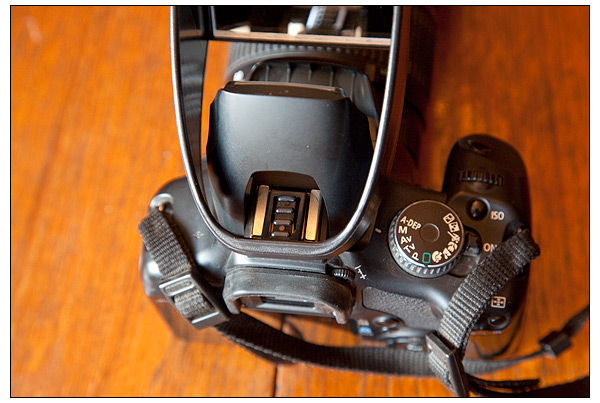
The Lightscoop is easy to use, inexpensive and will really help photographers make better portraits. If you’ve got a digital SLR or superzoom digital camera and you want an inexpensive way to improve your indoor flash photos, the Lightscoop is it. The Lightscoop is available with silver or gold (warming) reflectors and you can buy one for $34.95 or both for $69.90. They don’t guarantee it for all cameras, but I would be surprised if it doesn’t work on any camera that has a hot shoe and a pop-up flash as it just slides right into the hot shoe. My only criticism is the size – it’s a bit large and awkward. If you have a small camera bag it might be tough to wedge the Lightscoop in with your DSLR. Maybe the Lightscoop 2.0 will fold flat for easy travel!
Related Content:
Flash & Flash Accessory User Reviews
Studio & Lighting Forum
Lightscoop Web Site
Cheap Gifts For Photographers Guide
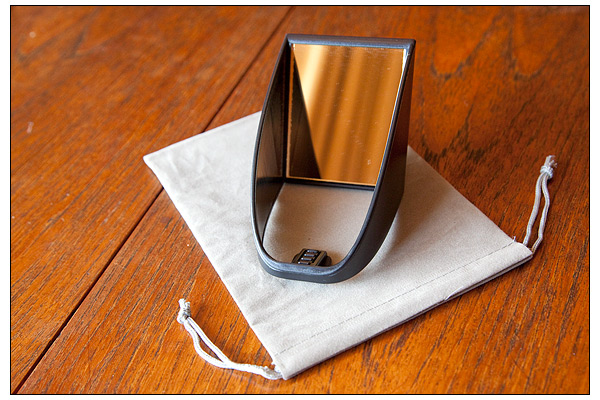


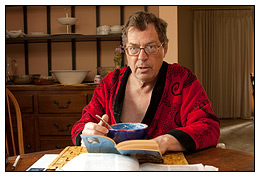
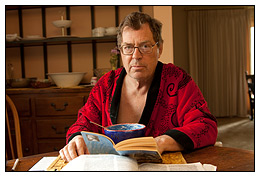
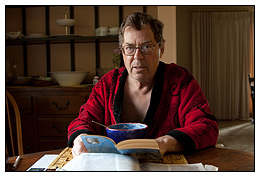
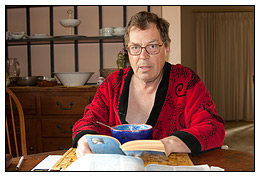
Nifty. The pic of Photo-Dad taken with the standard Lightscoop looks better than the gold one.
But what do you do when you don’t have a ceiling? Or it’s not white? I always found that frustrating back when I used an external flash with my 35mm camera. And even the variation in ceiling heights led to a lot of inconsistency. You could use walls, too, but again, inconsistency. Are there any handy tools for softening flash on digital cameras?
This “review” is severely lacking. You fail to note that the instructions for the Lightscoop (not listed anywhere on the product’s website) recommend using ISO 800 ONLY, and also limit your distance to subject.
This handicaps the Lightscoop compared to other products out there.
Thanks for the comment / criticism, Elliot. I didn’t use it at ISO 800. That sounds to me like a safety setting on the part of the manufacturer. It will ensure better results in low light, but I’m not necessarily a rule follower. I used the Lightscoop in fairly low light at ISO 200 and I am perfectly happy with the results.
If you know of other, better products, why don’t you share them with us? I’m sure there are lots of people who would like to know about other accessories that can help them improve their photography.
Missed the comments on this review until now… our website has ALWAYS specified the suggested 800 ISO setting. So is the information about distance-to-subject. It’s all physics, but we spell it out for everyone and always have.
It’s a shame that people always have to be so ready to assume the worst: http://lightscoop.com/howto/instructions.php
The only “other” produces we know of do not redirect the pop-up flash to a ceiling or wall for bouncing and changing the direction of the light as well as softening it.
It’s the bounce off another surface that requires maximum flash output.
As for fits on other cameras… the chief issue is whether the flash is powerful enough to bounce to a wall or ceiling and properly expose the picture. Also, the Sony models have a completely different hot shoe than all other cameras.
We welcome ALL constructive comments… thanks for reviewing the Lightscoop!
Warm regards,
Betsy Brill
(Ken’s wife and COE (Chief of EVERYTHING)
http://www.lightscoop.com
I have seen this nifty accessory put in some work recently and I must say I was impressed. Like you, my friend decided to go against the grain and use a different ISO setting on her Olympus 520 as well as finding a sweeter aperture on her zoom lens (Zuiko 14-54mm) and the result was quite appealing, actually. I’m convinced and agree that the recommended settings are merely the manufactures safe zone.
Maybe I’m being greedy or cheap, you decide, but I wish that it could hit 18ft ceilings so I could use it in concert and church settings but from what I saw first hand it is making the decision to purchase a $500 usd flash a lil harder as I would instead rather get a 50mm lens. Kudos to Lightscoop for doing this to me!